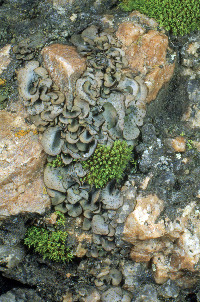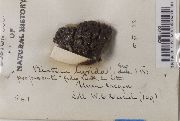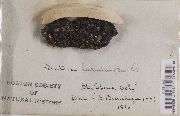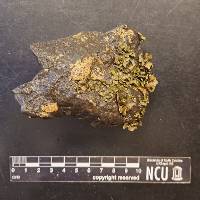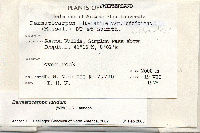
Consortium of Lichen Herbaria
- building a Global Consortium of Bryophytes and Lichens as keystones of cryptobiotic communities -
- Home
- Search
- Images
- Species Checklists
- US States: O-Z >
- US National Parks
- Central America
- South America
- US National Parks
- Southern Subpolar Region
|
|
|
|
Family: Verrucariaceae
[Biatora lurida (Dill. ex With.) Fr., moreDermatocarpon aquaticum (Weiss) Zahlbr., Dermatocarpon fluviatile (Weber) Th. Fr., Dermatocarpon fluviatile f. fluviatile (Weber) Th. Fr., Dermatocarpon fluviatile f. intestiniformis Vain., Dermatocarpon fluviatile f. subconcavum Vain., Dermatocarpon weberi (Ach.) W. Mann, Dermatocarpon weberi var. decipiens (A. Massal.) Vain., Dermatocarpon weberi var. weberi (Ach.) W. Mann, Endocarpon aquaticum (Weiss) Gaertn., G. Mey. & Scherb., Endocarpon fluviatile (Weber) DC., Endocarpon miniatum var. aquaticum (Hoffm.) Schaer., Entosthelia fluviatilis (Weber) Hav., Lepidoma luridum (Dill. ex With.) Gray, Lichen amphibius With., Lichen aquaticus Weiss, Lichen luridus Dill. ex With., Lichen weberi Ach., Lobaria aquatica (Weiss) Hoffm., Parmelia aquatica (Weiss) Ach., Parmelia fluviatilis (Weber) Ach., Patellaria lurida (Dill. ex With.) Wallr., Placodium luridum (Dill. ex With.) Link, Platisma aquaticum (Weiss) Hoffm., Schaereria lurida (Dill. ex With.) Gyeln., Verrucaria weberi Humb.] |
Nash, T.H., Ryan, B.D., Gries, C., Bungartz, F., (eds.) 2004. Lichen Flora of the Greater Sonoran Desert Region. Vol 2. Thallus: foliose, multi-lobed, consisting of many interconnected lobes with numerous holdfasts on the lower side with 4-25 mm wide lobes upper surface: light to dark brown with either type of epinecral layer, turns usually green when wet upper cortex: 60-130 µm thick with the outermost part, c. 10 µm, brownish algal layer: 40-160 µm thick, located in lower part of upper cortex or medulla medulla: 50-240 µm thick, turning red with Melzer's iodine lower cortex: 30-90 µm thick Perithecia: rather common, broadly obpyriform to globose, 210-490 µm high and 150-520 µm, primarily with a hyaline exciple that is light brown to brown in the uppermost part, rarely hyaline throughout asci: clavate or cylindrical, 8-spored ascospores: simple, hyaline, 10.5-20 x 5.5-8.5 µm Pycnidia: common, immersed, with ostiolum similar to that of the perithecium, or located in warts conidia: bacilliform, 4-5 x 1 µm. Spot tests: all negative Secondary metabolites: none detected. Substrate and ecology: rocks in seepages or by creeks and lakes World distribution: North America and Europe Sonoran distribution: throughout Arizona. Notes: Dermatocarpon luridum is a common species in seepages and brooks in the temperate zone of both Europe and North America. It is easily recognised by its Melzers reaction, multi-lobed habitus and that it usually turns green when wet. |
|
|
|
Powered by Symbiota










